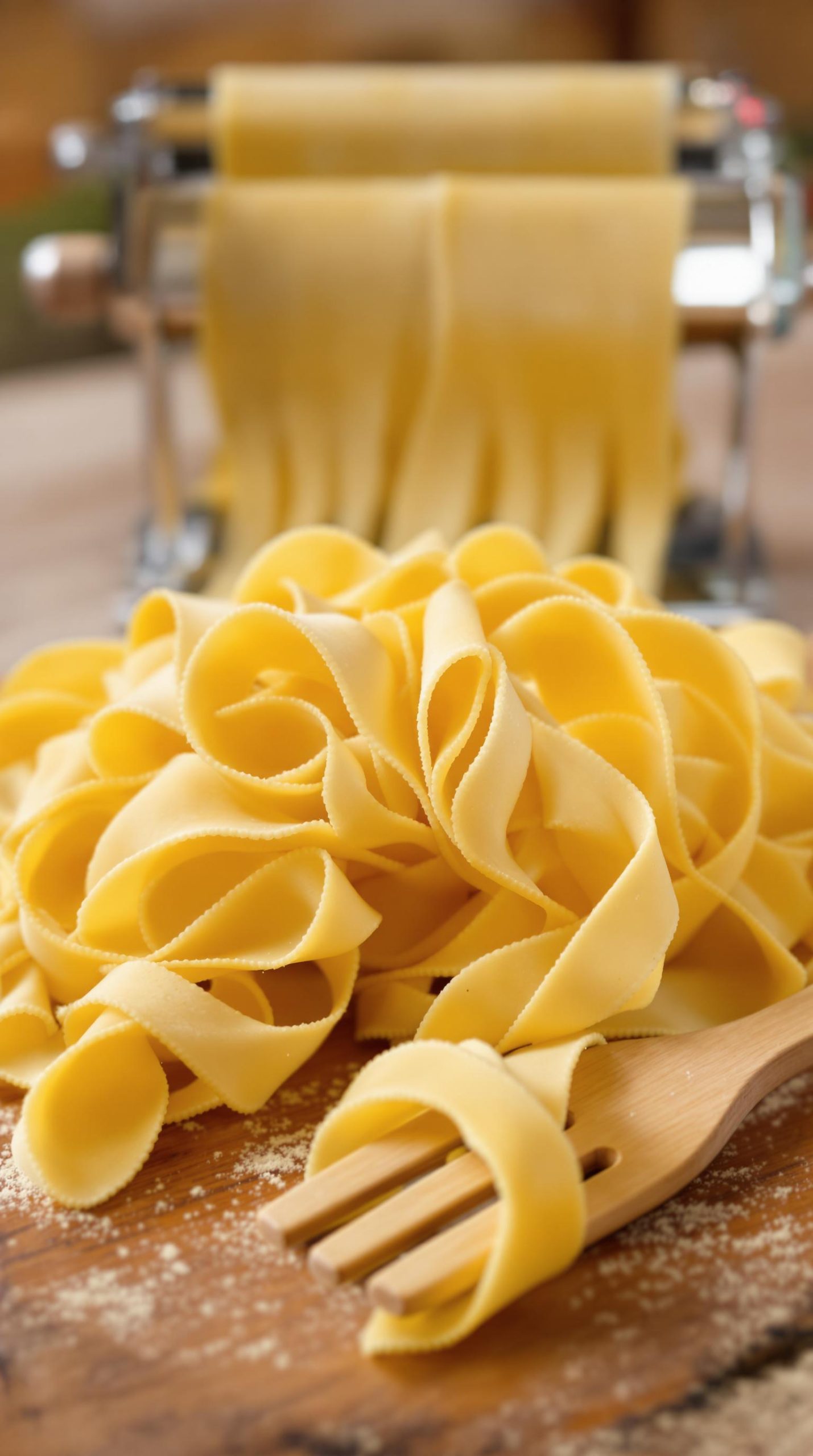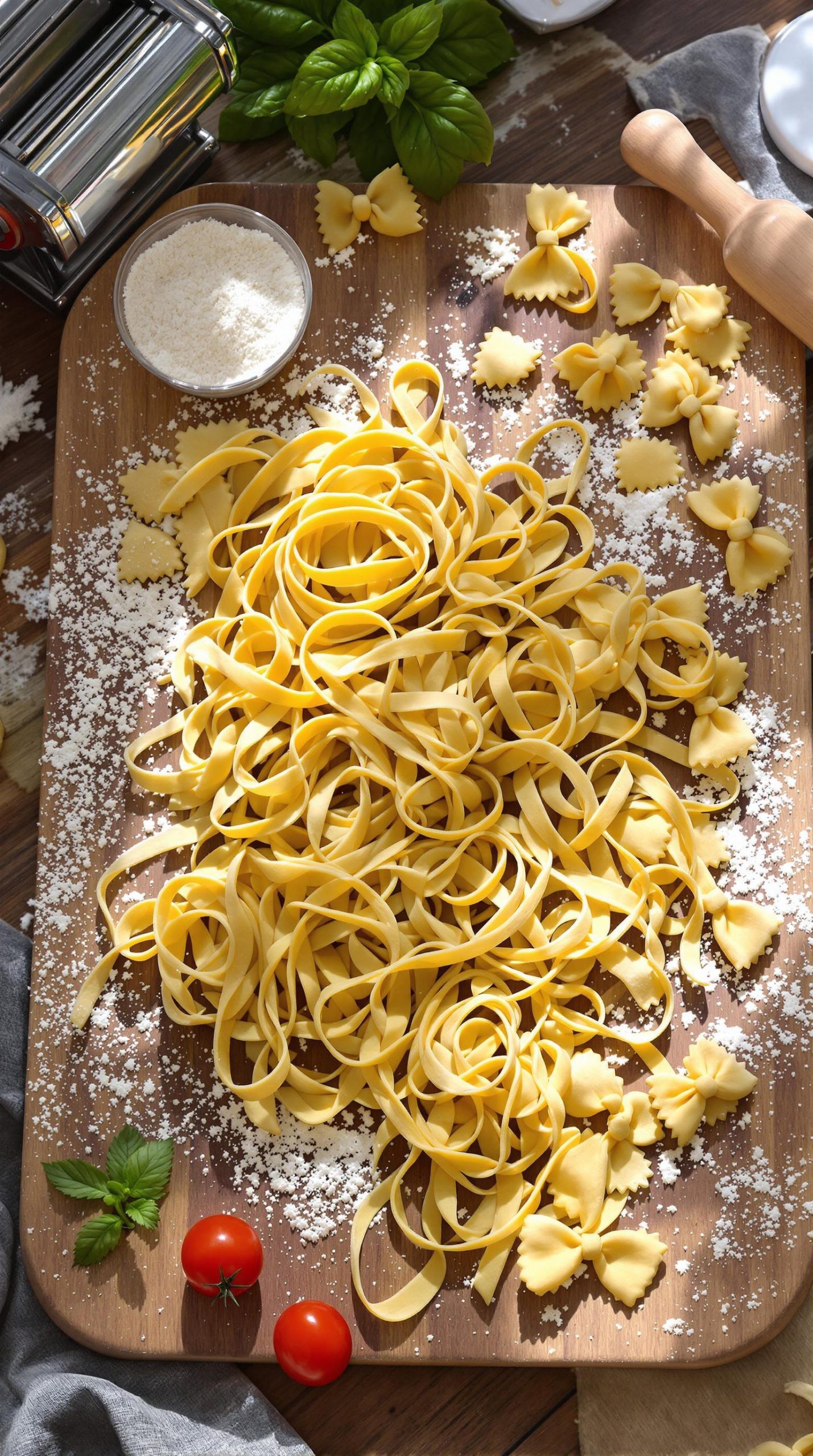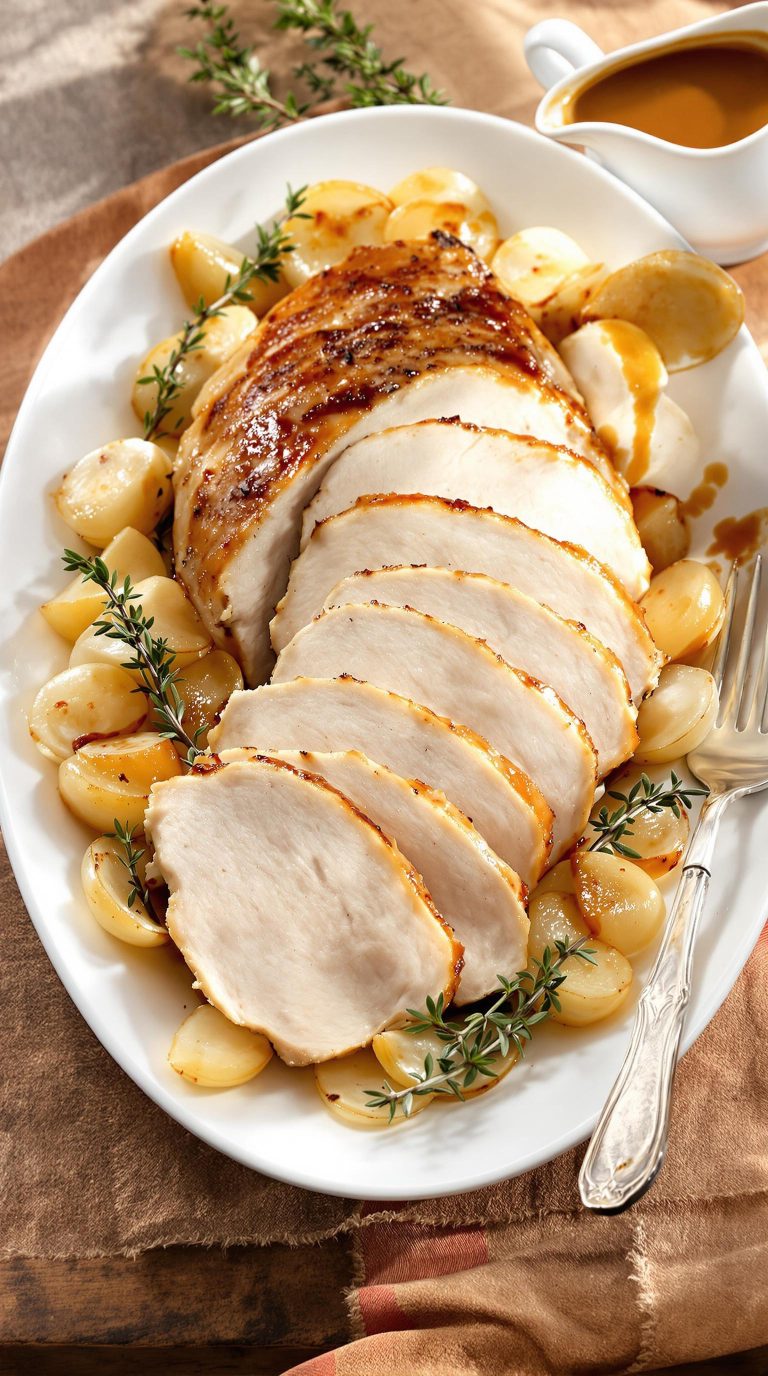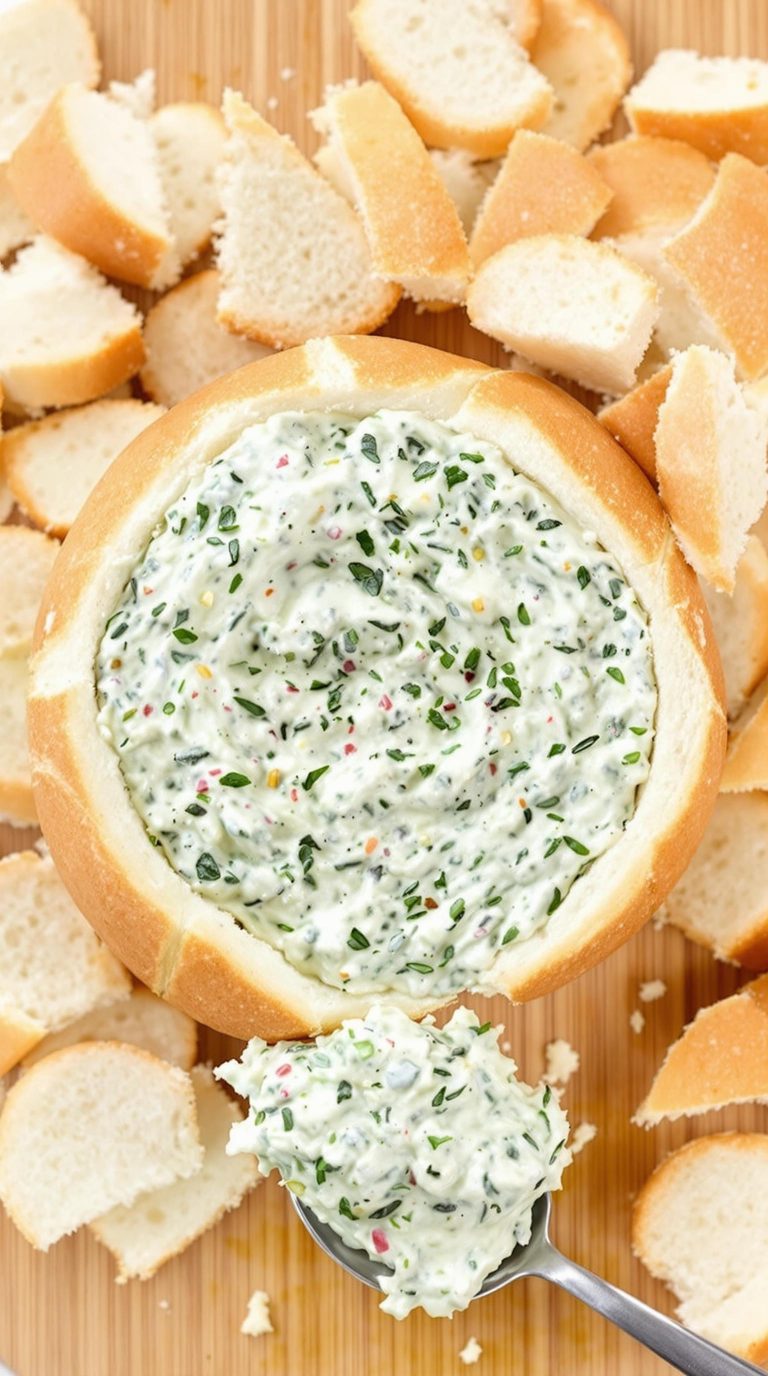Why You’ll Love this Fresh Homemade Pasta
Everyone deserves to experience the joy of fresh pasta at least once in their life.
There’s something magical about transforming simple flour and eggs into silky, tender noodles that cook in minutes. I’m talking about pasta that melts in your mouth, with a delicate chew you just can’t get from the boxed stuff.
The process itself becomes meditative—kneading the dough, feeling it transform under your hands.
And that satisfaction when you cut your first perfect fettuccine? Unmatched.
Plus, you can customize shapes, add colors with spinach or tomato, even make fancy ravioli for dinner parties.
What Ingredients are in Fresh Homemade Pasta?
Fresh pasta is a marvel of culinary simplicity—requiring just a couple of pantry staples to create something truly extraordinary. The beauty lies in how these basic ingredients transform through your hands into silky, tender strands that put the store-bought version to shame. When I make pasta from scratch, I’m always amazed at how just flour and eggs can create such magic.
- 4 large eggs
- 3 cups all-purpose flour
While the basic recipe is wonderfully minimal, there’s room for creative variations too. Want colorful pasta? Add a bit of spinach puree for green pasta, tomato paste for red, saffron for yellow, or even carrot puree for orange hues. The flavor stays fundamentally the same—it’s just the visual appeal that changes.
And remember, quality matters with such few ingredients. Farm-fresh eggs with vibrant yolks will give your pasta a richer color and flavor, while a good all-purpose flour provides just the right amount of gluten for that perfect al dente texture. No need for fancy “00” flour, though it’s lovely if you have it.
How to Make this Fresh Homemade Pasta

Making pasta from scratch starts with the simplest mixing of 4 large eggs into 3 cups of all-purpose flour. Begin by spreading your flour on a clean board and creating a well in the middle—think of it as making a little flour volcano with a crater ready for the eggs. Crack your eggs into this well and gradually incorporate the flour, working from the center outward.
This hands-on approach connects you to centuries of Italian tradition, though I won’t judge if you reach for a food processor instead (just pulse the eggs with some flour until combined, then transfer to a board).
Once your dough comes together, the real transformation happens during kneading. Work that dough for about 7-8 minutes by hand (or 3-4 minutes if you started with a processor), pushing and folding until it passes the finger test—poke it and your finger should come out clean but slightly moist. If the dough still feels sticky, keep kneading.
Let your dough rest a bit before cutting it in half, flattening, and dusting with flour. Now comes the pasta maker magic! Start with the widest setting, feeding your dough through repeatedly while folding it over each time. Gradually move to narrower settings until your pasta sheets are silky smooth.
For fettuccine or linguine, use the cutting attachment to create perfect strands, then let them dry for about 30 minutes before cooking. Many home cooks find that a quality stand mixer can significantly reduce the effort needed while maintaining consistent pasta thickness.
The beauty of homemade pasta is the versatility of shapes you can create. For fun bowtie pasta, cut rectangles and pinch them in the center.
Tortelloni require squares that you’ll fold diagonally around a filling, then join the corners. Ravioli start as long rectangles with filling spaced along half the sheet before folding and sealing, while raviolini get their charming scalloped edges from cookie cutters.
Each shape has its own technique, but they all start with this same simple dough—the perfect canvas for whatever pasta dreams you’re cooking up tonight.
For more consistent results with less effort, consider using a premium stand mixer to thoroughly combine and knead your pasta dough to the perfect consistency.
Fresh Homemade Pasta Substitutions and Variations
The beauty of homemade pasta lies in its endless adaptability—something I find incredibly freeing in the kitchen.
Want colorful pasta? Mix spinach for green, tomato paste for red, saffron for yellow, or even pureed carrots for orange pasta. The flavor stays consistent—only the color changes.
You’re not limited to basic noodles, either. Try folding the dough into bowties by scrunching rectangles in the center.
Or create tortelloni by folding squares diagonally around filling, then joining the corners.
Feeling ambitious? Make ravioli by spacing filling along half a rectangle, folding, cutting and sealing.
The possibilities? Nearly endless.
What to Serve with Fresh Homemade Pasta
Now that we’ve mastered forming our pasta into various shapes, let’s consider what to serve alongside your handcrafted creation.
Fresh pasta pairs beautifully with lighter sauces that won’t overwhelm its delicate texture. Think butter-based sauces with herbs, a simple tomato sauce, or a classic carbonara that clings to each strand.
For sides, I love a crisp green salad with a tangy vinaigrette to cut through the richness.
Garlic bread is never wrong, is it? And don’t forget a good bottle of wine—perhaps a medium-bodied Sangiovese or Chianti that complements without competing.
Trust me, your guests will taste the difference.
Final Thoughts
As you’ve journeyed through this homemade pasta adventure with me, I hope you’ve discovered that creating pasta from scratch isn’t just about the eating—it’s about the entire experience.
There’s something magical about feeling dough transform under your fingertips, watching it stretch through the pasta maker, and seeing plain ingredients become something extraordinary.
Whether you’re making fettuccine for a quiet dinner or crafting colorful tortellini for guests, the process connects you to centuries of tradition.
Can you think of anything more satisfying than twirling pasta you’ve made with your own hands?
And if you’re looking for more low-effort cooking projects, consider how slow cooker recipes can provide the same satisfaction with minimal hands-on preparation.





